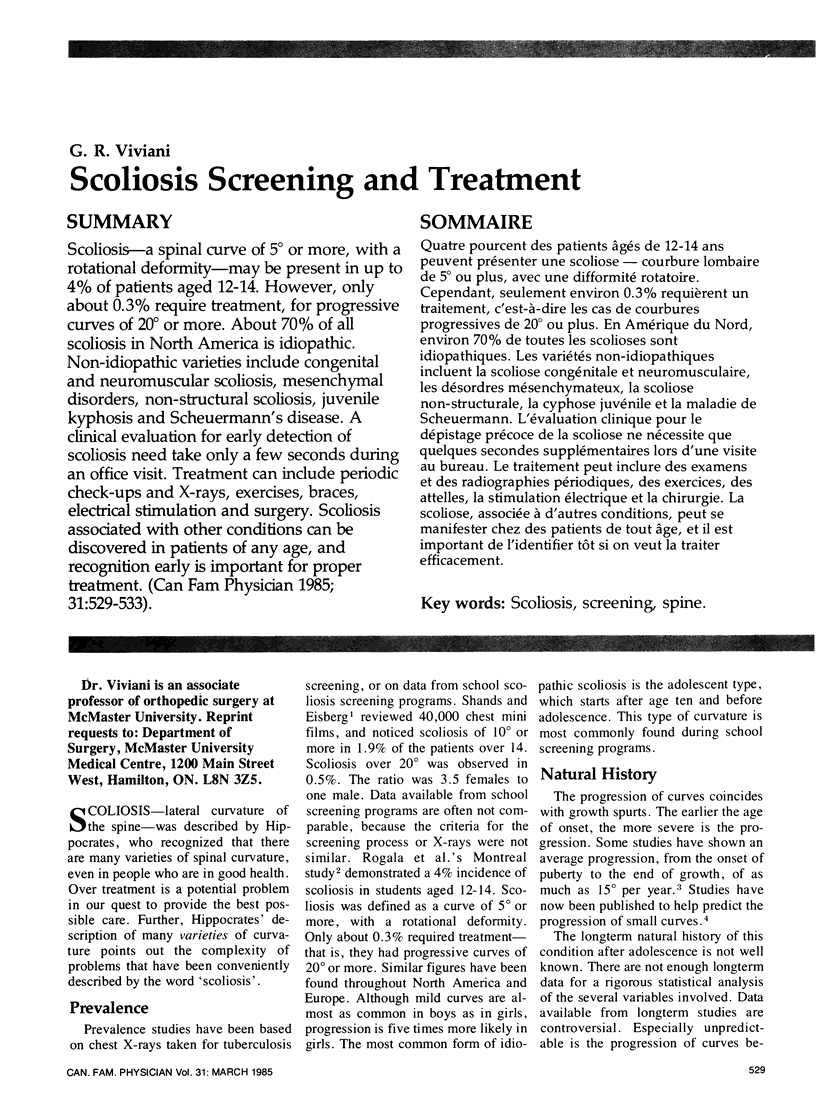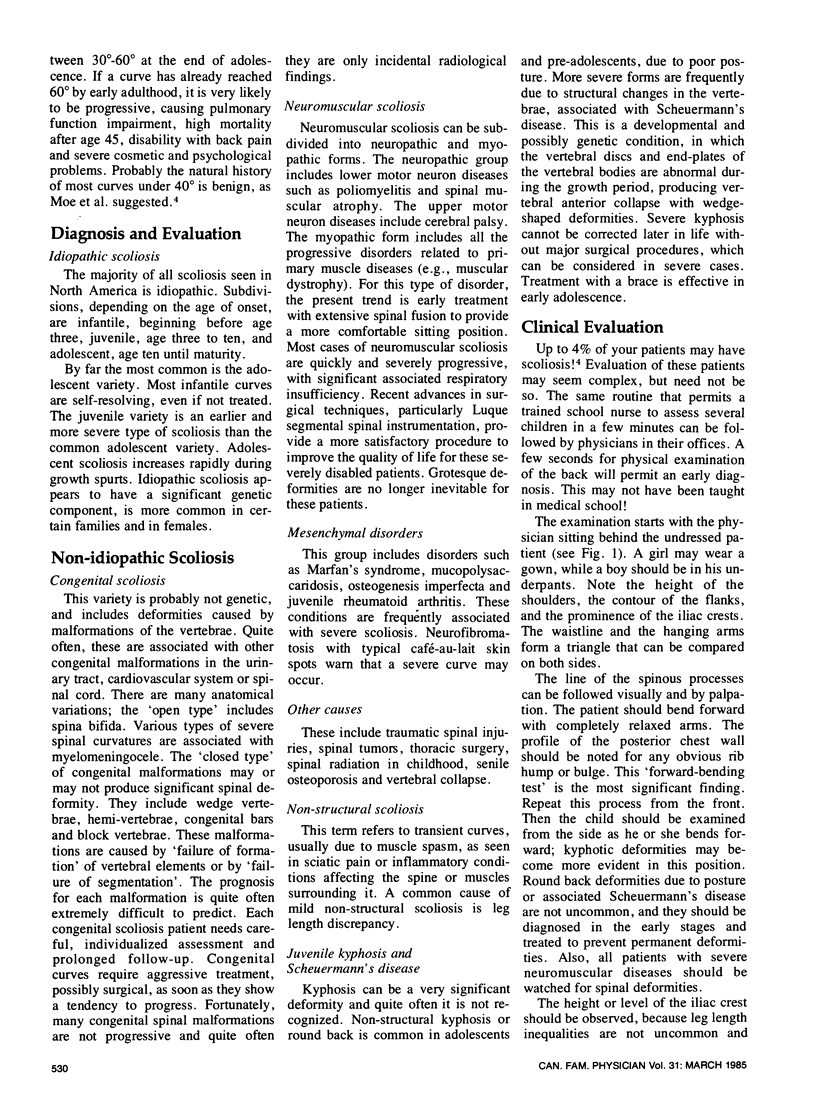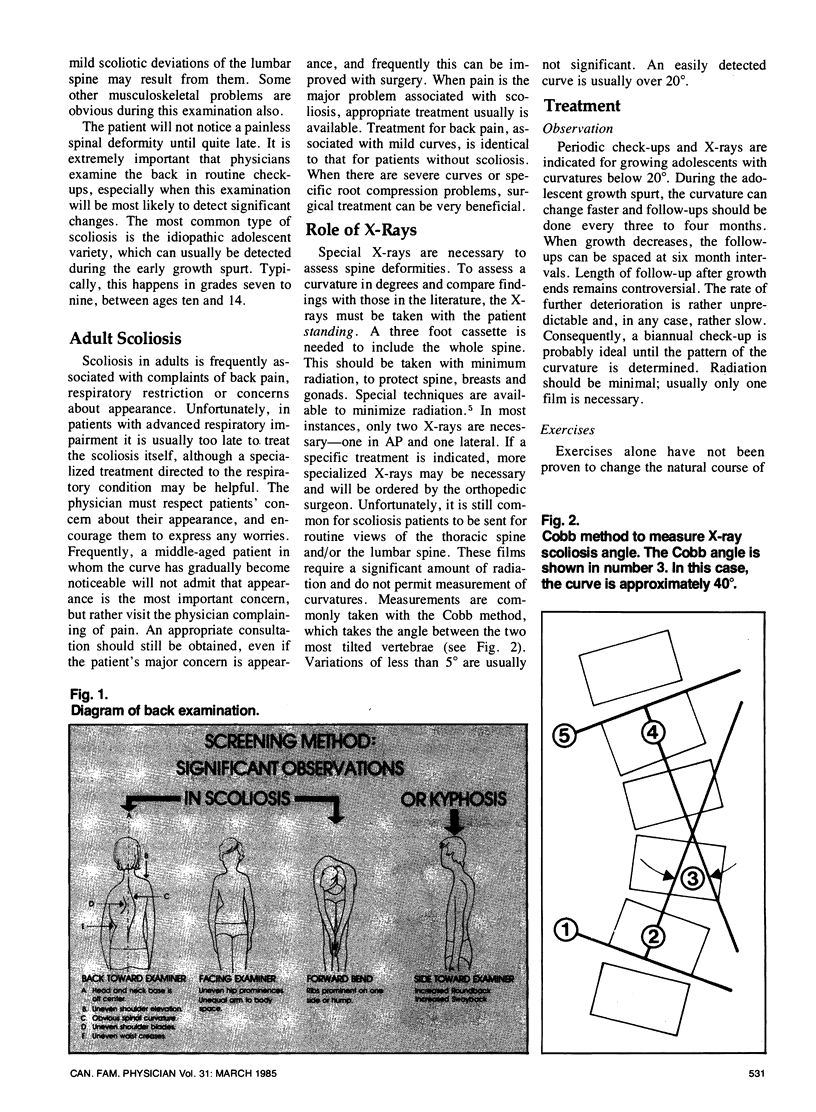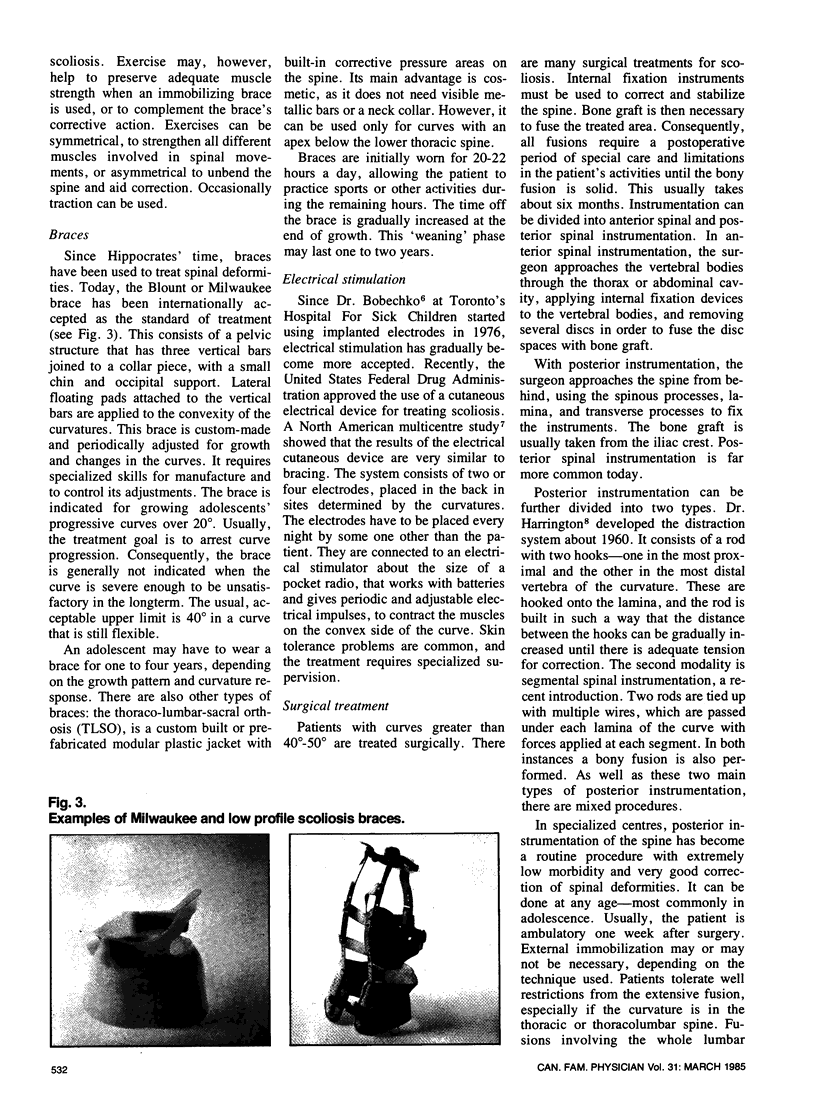Abstract
Scoliosis—a spinal curve of 5° or more, with a rotational deformity—may be present in up to 4% of patients aged 12-14. However, only about 0.3% require treatment, for progressive curves of 20° or more. About 70% of all scoliosis in North America is idiopathic. Non-idiopathic varieties include congenital and neuromuscular scoliosis, mesenchymal disorders, non-structural scoliosis, juvenile kyphosis and Scheuermann's disease. A clinical evaluation for early detection of scoliosis need take only a few seconds during an office visit. Treatment can include periodic check-ups and X-rays, exercises, braces, electrical stimulation and surgery. Scoliosis associated with other conditions can be discovered in patients of any age, and recognition early is important for proper treatment.
Keywords: Scoliosis, screening, spine.
Full text
PDF




Images in this article
Selected References
These references are in PubMed. This may not be the complete list of references from this article.
- Aaro S., Ohlund C. Scoliosis and pulmonary function. Spine (Phila Pa 1976) 1984 Mar;9(2):220–222. doi: 10.1097/00007632-198403000-00015. [DOI] [PubMed] [Google Scholar]
- Dickson R. A. Screening for scoliosis. Br Med J (Clin Res Ed) 1984 Aug 4;289(6440):269–270. doi: 10.1136/bmj.289.6440.269. [DOI] [PMC free article] [PubMed] [Google Scholar]
- Gray J. E., Hoffman A. D., Peterson H. A. Reduction of radiation exposure during radiography for scoliosis. J Bone Joint Surg Am. 1983 Jan;65(1):5–12. [PubMed] [Google Scholar]
- HARRINGTON P. R. Treatment of scoliosis. Correction and internal fixation by spine instrumentation. J Bone Joint Surg Am. 1962 Jun;44-A:591–610. [PubMed] [Google Scholar]
- Lonstein J. E., Bjorklund S., Wanninger M. H., Nelson R. P. Voluntary school screening for scoliosis in Minnesota. J Bone Joint Surg Am. 1982 Apr;64(4):481–488. [PubMed] [Google Scholar]
- Lonstein J. E., Carlson J. M. The prediction of curve progression in untreated idiopathic scoliosis during growth. J Bone Joint Surg Am. 1984 Sep;66(7):1061–1071. [PubMed] [Google Scholar]
- Reuben J. D., Brown R. H., Nash C. L., Jr, Brower E. M. In vivo effects of axial loading on double-curve scoliotic spines. Spine (Phila Pa 1976) 1982 Sep-Oct;7(5):440–447. doi: 10.1097/00007632-198209000-00007. [DOI] [PubMed] [Google Scholar]
- Rogala E. J., Drummond D. S., Gurr J. Scoliosis: incidence and natural history. A prospective epidemiological study. J Bone Joint Surg Am. 1978 Mar;60(2):173–176. [PubMed] [Google Scholar]
- SHANDS A. R., Jr, EISBERG H. B. The incidence of scoliosis in the state of Delaware; a study of 50,000 minifilms of the chest made during a survey for tuberculosis. J Bone Joint Surg Am. 1955 Dec;37-A(6):1243–1249. [PubMed] [Google Scholar]
- Viviani G. R., Budgell L., Dok C., Tugwell P. Assessment of accuracy of the scoliosis school screening examination. Am J Public Health. 1984 May;74(5):497–498. doi: 10.2105/ajph.74.5.497. [DOI] [PMC free article] [PubMed] [Google Scholar]



